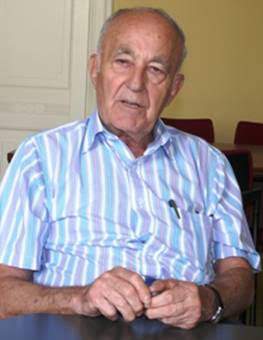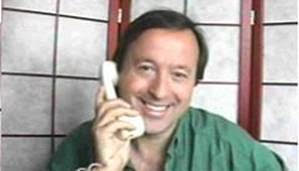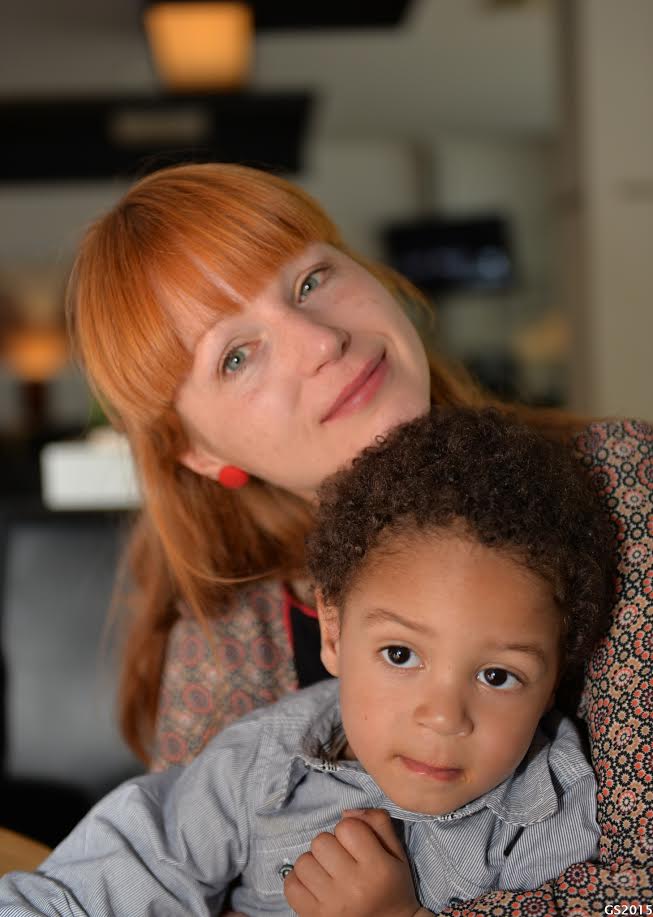
THE VOICE OF INTERNATIONAL LITHUANIA
|
VilNews has its own Google archive! Type a word in the above search box to find any article.
You can also follow us on Facebook. We have two different pages. Click to open and join.
|
Author Archive
Lithuania is the place to visit in 2011!
- Posted by - (1) Comment
|
Text: Giedre Paliusytė
Lithuania is a beautiful country, situated at the western end of the East European Plain, on the endless white sand southern shores of the Baltic Sea. Though Lithuania is small. It is, for example, almost 148 times smaller than China and has only 3,5 million inhabitants – which is almost 444 times less than China. Still Lithuania has amazingly much to offer... Everything is possible here! You can spend your time actively or find a place to relax in untouched nature; choose from a plethora of cultural events, explore the cities-open air museums and much more! Why did I compare Lithuania to China? In 2010 Lithuania took part in the global exhibition Expo in China, Shanghai. Over 5 million people visited Lithuania’s Pavilion. For many of them it was the first acquaintance with this unknown, far away country which the exhibition visitors found definitely worth visiting! A hot air balloon was chosen as the symbol for Lithuania’s pavilion. Visitors of the exhibition were invited to take an impressive virtual flight... But Lithuania itself is nothing but hot air!

RECOMMENDED WEB PAGES ABOUT LITHUANIA: http://www.travel.lt/index.php?lang=2 http://en.wikipedia.org/wiki/Lithuania RECOMMENDED VIDEOS ABOUT LITHUANIA: http://www.youtube.com/watch?v=jkyANEiQrBs http://www.youtube.com/watch?v=hxSjew7ZEFA http://www.youtube.com/watch?v=Fm5lG6DmNxo |
|
Reasons to visit us in 2011? The European Basketball Championship 2011 will be held right here, In Lithuania!!!
For a large part of Lithuanians Basketball is more than a game, we can even hear people calling it our “second religion”. Lithuanians know how to support their teams and how to celebrate victories. If you are not sworn enemies with this a game, you probably know that one of the most important events for Lithuania this year will be the European Basketball Championship 2011. Lithuania will be hosting the European Basketball Championship for the second time in countries history - the first was a tumultuous 1939. Host cities will be Alytus, Klaipeda, Kaunas, Siauliai, Panevezys and Vilnius. First tickets will go trade in March 2011. For more information about the European Basketball Championship of 2011 please see FIBA EUROPE.
An independent republic in the middle of the city!
The (un)official Independence Day of Republic of Užupis is a celebration for everyone! Almost fourteen years ago a district of Vilnius Old Town Užupis started celebrating its Independence Day. This year on April 1st we will again be able to spend a day partying, observing and learning to make traditional handicrafts, exploring the district that has its own president, a constitution and is one of the coziest parts of Vilnius, the UNESCO-listed capital of Lithuania.
Užupis is often being compared to Montmartre in Paris, or Freetown Christiania in Copenhagen because of its artistic atmosphere, events and people who living and creating there.
International Hanseatic in Kaunas May 19th 22nd
From May 19 to 22 International Hanseatic days will rock the Kaunas city. Guests from about 100 cities in Europe will come to contribute to the feast and celebrate together. More than 100 different events will take place and all of them will all be for free!
Most Lithuanians are very much interested in their history old customs and traditions, they want to keep them and demonstrate them to their friends and guests from other countries on numerous occasions. For more information please see: http://www.hanzakaunas.lt/ |
|
|
||||||||||||||||||||||
VILNIUS – LITHUANIA’S VIBRANT CAPITAL

Vilnius is a city full of color, with a historic centre registered in the Cultural Heritage of UNESCO, and for a good reason. The countless Baroque churches, narrow cobblestone streets, impressive squares and some unusual sites such as the statue of Frank Zappa, a statue of a giant egg or of a mermaid, artistic districts, mysterious legends and true stories gives it the right to be called the most funky destination in Northern Europe!
Vilnius Old Town’s Pilies gatve (Tower St.), The street is filled with life, people and music year around!
The capital of Lithuania – Vilnius, is a place where history, culture and new tendencies in culture and politics can be felt. A medieval castle and the centre of the city and the remains of the defensive wall reminds us of the XIII century when pagan Lithuania had to withstand direct campaigns of Teutonic Knights. The Cathedral of Vilnius– is the main Roman Catholic Cathedral of Lithuania and also is the place where the movement for independence from the Soviet Union began in 1989. The Old Town of Vilnius is a World Heritage site where you can find architecture examples of Gothic, Renaissance, Baroque and Modern architecture. Lithuania is an Independent country since 2004 a member of European Union and NATO.

In 1994, the Old Town of Vilnius was included in UNESCO World Cultural Heritage. It is one of the largest (comprising around 360 ha) and most scenic old towns in Europe, founded by Grand Duke Gediminas in 1323 (you can see the last existing tower of the former fortress with his name on the hilltop at the street end).
Vilnius’ light-coloured manors and church towers remind one of the of the old rich Italian cities such as Rome and Florence. Vilnius is the most northward capital-city having inherited the architecture styles of the Mediterranean, and is sometimes referred to as the world’s most Italian city outside Italy.
Vilnius of the 14th and 17th centuries is considered the major European cultural and educational centre of Western civilisation that reached farthest into the East. The Old Town of the capital reflects the apogee of the city grandeur and beauty of this period, while the rapidly growing Vilnius of today, with its around 600,000 inhabitants, is found among the world’s 20 most remarkable cities - that should not be missed by any world traveller.
THE VILNIUS CHURCHES AND SHRINES – DON’T MISS THEM!
|
|
|
|
|
|
VILNIUS CHURCHES
Vilnius Cathedral (top), St. Anne’s and Bernardines’ Churches, St. Casimir’s Church, the Romanov Church,
The St. Peter and Paul Church, The Orthodox church of Holy Mother of God

The St. Peter and Paul Church, The Orthodox church of Holy Mother of God
Vilnius has been known as the city of churches since the Middle Ages, several dozen of them can be found in the Old Town alone. Almost every style of architecture can be found in the churches and shrines of many religions in the city: gothic, renaissance, baroque and classicism. The Cathedral of Vilnius (top picture), from which we invite you to start the tour, is the most important piece of 18th century classical architecture.
These are the churches and shrines you simply have to see while visiting Vilnius:
| - The Vilnius Cathedral - St. Anne's and Bernadines' Churches - The Church of St.Michael - The Orthodox Church of St. Paraskeva - Sts. John‘s Church - The Temple of God‘s Mercifulness - The Church of the Holy Spirit - The Great Vilnius Synagogue Place |
- The Evangelical Lutheran Church - The Church of St.Michael the Archangel - St. Casimir‘s Church - The Church of the Holy Trinity - The Church of the Holy Spirit - The Church of St. Teresa - The Gate of Dawn - The St. Peter and Paul Church |
LITHUANIAN SCIENCE, CULTURE AND MORE…
|
|
|
|
When Vilnius University (above) opened its doors in 1579 this became another strong manifestation of Lithuania’s strong position as a leading nation for fine intellectualism in Eastern and Central Europe. Vilnius University is the oldest and largest Lithuanian higher education institution, an active participant in international scientific and academic activities and boasts many prominent scientists, professors and graduates. Let the amazing University Library be your starting point for a study of Lithuania’s many roles within science and intellectual development fields… |
Eimuntas Nekrosius is one of the best theatre directors in Lithuania. I Chose him to represent countries rich cultural life. I believe you will be surprised seeing what a variety this country has to offer – with several well-known professional symphonic and chamber orchestras, choirs, opera singers, ballet dancers and artists within many fields. Cultural events take place all year around; marvellous summer festivals of classical music, theatre, cinema and poetry performances by many Lithuanian and foreign artists, and much, much more. Lithuania is also widely known as a jazz country, famous for its several international jazz festivals organized by jazz performers and fans in several cities. |
TRAKAI – LITHUANIA’S MEDIEVAL CAPITAL

You can’t leave Lithuania without visiting Trakai! It is located in one of Lithuania’s picturesque lake districts, just 30 km from Vilnius. Trakai was the administrative, economic and defensive centre of the Grand Duchy of Lithuania at the beginning of the 14th c. The majestic Gothic castle on an island on Galve Lake is the only castle surrounded by water in Eastern and Central Europe. Inside the castle, there is the Trakai Historic Museum where visitors can see old armament collections as well as other historic exhibits. Also worthwhile seeing is the Karaim quarter with its restaurants originating from the Black Sea area!
DRUSKININKAI AND GRUTAS PARK (LENIN’S NEW HOME)
|
|
|
ABOVE LEFT: DRUSKININKAI IS LITHUANIA’S SPA CAPITAL
Druskininkai is Lithuania’s spa capital since the 19th century. This is the place you simply have to go to if you need any sort of treatment for your soul or body. Thousands of others, from around the globe, are already cured!
For more information see http://info.druskininkai.lt/



MEETING LENIN FACE-TO-FACE
The Grutas Park in Druskininkai includes statues of Lenin and many other Soviet leaders, all removed from their former official locations in the wake of Lithuania’s regained freedom in 1990 – 1991. We got them, didn’t we?
At the gate to Grutas Park you will be met by Soviet militiamen and soldiers. Well inside the park you will meet them face to face – the individuals Lithuanians and many around the world learned to hate for their cruel, gruesome behaviour to innocent people. You may also feel as if you are in a Siberian concentration camp in the section of the Park that is surrounded by a moat and barbed wire fences with watch-towers. The atmosphere of a Soviet canteen permeates
the park café where the food is served in metal bowls. The aluminium cutlery is a popular souvenir.
For more information see http://www.grutoparkas.lt/
KAUNAS – LITHUANIA’S PRE-WAR CAPITAL

Kaunas Old Town is an amazingly lively and attractive place to be. Have you been there?
Kaunas is the second largest city in Lithuania, with a population of around 415,000. Kaunas was founded in the 12th century and owes its existence to its favourable geographic position at the confluence of Lithuania’s two biggest rivers, the Nemunas and the Neris, 100 km from Vilnius and 200 km from the port city Klaipeda. Kaunas was the capital of Lithuania between 1st and 2nd World War, when Vilnius was occupied by Poland. Kaunas enjoys a remarkable Old Town which is a concentration of ancient architectural monuments: the remnants of the 13th century Castle, the Cathedral, the Jesuit and St. Trinity Churches as well as the Old Town Hall, nicknamed the "White Swan" for its charming architecture. The Old Town Hall Square, the most important architectural accent of the Old Town, is reminiscent of the Middle Ages with the early Gothic Vytautas Church and the late Gothic Perkunas House not far away. The Old Town squares and buildings of the surrounding streets are brisk with numerous restaurants, bars and cafes as well as art galleries and Lithuanian folk art souvenir shops, popular among tourists.
LITHUANIAN LANDSCAPES – NEMUNAS RIVER

Mingė often nicknamed Lithuanian Venice is a unique fishermen's village where the main "road" is the river!
Lithuania has a diverse landscape - three hilly uplands, and three lowlands plains. The highest point is Juozapine Hill, not far from Vilnius; it rises to 293.6 meters above sea level. There are over 4,000 lakes and 722 rivers in this country. The longest river is the Nemunas (above), which is 937 km long totally whereas its length through Lithuania is 457 km.
But these are only the hard facts. The Lithuanian countryside is so much more than just facts. It is only when you begin your walk through the woods here, as you slowly float down one of the rivers in a canoe or a raft, when you sit down at one of the many amazing lakes, or when you first put your foot down in the Baltic Sea’s salty water that you really understand that this country is different. It is now, in the year of 2010, that you will have the great opportunity of feeling close to Lithuania's highly inspirational nature. Why wait?
SIAULIAI – THE HILL OF CROSSES

The Hill of Crosses near Siauliai city in North Lithuania is a most unique historic site where, except for some intervals, people have been continuously building crosses since the 19th century, asking for celestial help or paying back for it.
Today, there are over 200,000 crosses that have been counted on the site including fine artefacts by local folk artists as well as plain wooden crosses. ]At the Hill of Crosses, one can also see pope John Paul’s II cross made by a Lithuanian folk artist and built during the pope’s visit to Lituania in 1993.
There is a place in Lithuania, which is named “Hill of croses”. Why this place is so popular? Because in one place here you can find thousand of croses. This hill is a symbol of faith. Every year here are coming a lot of people and leaving at least a small cross in token of hopes and dreams, which comes true.
PALANGA – THE LIVELY BALTIC SEA RESORT
You can be at the Baltic Sea’s most attractive beaches only a few minutes after landing at Palanga Airport!
 If you want to have a calm holiday at an empty beach, then don't expect to find this in Palanga during the mid-summer months. Here, the beaches are always crowded, even in the evenings. If you like crowds of vibrant people at the beach, music, rhythms, games; then Palanga is for you. Though, at the end of the summer and in September, when the weather is still summer-like, the beach is less crowded and you can enjoy a much calmer atmosphere.
If you want to have a calm holiday at an empty beach, then don't expect to find this in Palanga during the mid-summer months. Here, the beaches are always crowded, even in the evenings. If you like crowds of vibrant people at the beach, music, rhythms, games; then Palanga is for you. Though, at the end of the summer and in September, when the weather is still summer-like, the beach is less crowded and you can enjoy a much calmer atmosphere.
 There are, however, a lot of other beaches nearby that are much less crowded also during the summer months, if that would be more to your preference. After all, Lithuania has the very top beaches of the Baltic Sea and Nordic area, with around 100 km soft, white sand beaches, all around 50 m wide and with the clear blue sea waves constantly rolling softly in… Did I mention that the country is called Lithuania?
There are, however, a lot of other beaches nearby that are much less crowded also during the summer months, if that would be more to your preference. After all, Lithuania has the very top beaches of the Baltic Sea and Nordic area, with around 100 km soft, white sand beaches, all around 50 m wide and with the clear blue sea waves constantly rolling softly in… Did I mention that the country is called Lithuania?
KLAIPEDA – THE HANSEATIC SEAPORT CITY
 Klaipėda city (population around 200,000) is the northernmost ice-free port of the Baltic Sea; an outstandingly important sea port and commercial centre since the 13th century. The 1st of August 1252 is considered to be the date Klaipėda was founded. In 1257 the city was granted the Lübeck City Rights
Klaipėda city (population around 200,000) is the northernmost ice-free port of the Baltic Sea; an outstandingly important sea port and commercial centre since the 13th century. The 1st of August 1252 is considered to be the date Klaipėda was founded. In 1257 the city was granted the Lübeck City Rights
By its old architecture this seaport city is close to the Nordic Countries and Germany; the Hanseatic styles and league. Some of the buildings that have survived in the cosy Old Town have a pronounced Fachwerk style.
Klaipėda cherishes nice marine traditions; it has hosted the Sea Festival on the last weekend of July every year since 1934,
an event that includes a number of performances of artistic companies and craftsmen’s fairs. The festival attracts many participants and guests not only from Lithuania but from abroad, too. The Kopgalis Fort complex, built in the 19th century, houses the Maritime Museum with an attractive exposition of marine nature and the history of navigation. These unique structures also accommodate a rich Aquarium and a Dolphinarium hosting shows of trained dolphins and Californian sea lions, which attract many spectators.

THE CURONIAN SPIT AND NERINGA

The Curonian Spit (Neringa) is a long and narrow sand peninsula that separates the Curonian Lagoon from the Baltic Sea. This natural wonder, listed as a UNESCO World Heritage site, still exists today solely due to human efforts to counter the natural erosion process. The Neringa landscape is truly unique, dominated by picturesque sand dunes and pristine beaches. The area has a distinct ethnographic flavour, characterised by wooden fishermen cottages and the local
speciality of smoked fish. Those looking for a quiet seaside vacation in picturesque surroundings will most definitely not be disappointed.
The huge sand dunes of the Curonian spit are the largest in North Europe.
You reach them by ferry from Klaipeda (takes only 10 min).
NIDA – THE FORMER FISHERMEN’S VILLAGE
|
|
|
The Nida home of the German writer Thomas Mann, today the Thomas Mann Museum.
The quiet resort village of Nida is based at the Curonian Spit near the Kaliningrad border, less than one hour’s drive from Klaipeda. With a beautiful Baltic Sea beach on the west side, the large Curonian Lagoon on the east side and the largest sand dunes of Northern Europe on the southern side, this is a truly unique place for a relaxed vacation. You should spend one or two weeks in a self catering Fisherman's cottage or a few days in a guest house or hotel. Take it easy!
"I have never visited anywhere that had such a relaxing effect on me as the view from the sun clock on the Great Dune
in Nida. The silky-smooth lagoon to one side of the golden spit and the sparkling waves of the Baltic Sea to the other side was breath-takingly beautiful. We did lots of walking, running and cycling including a walk along the Baltic Sea beach from west of Preila back to Nida”.
- The Barrett Family
THE CURONIAN LAGOON

|
The Curonian Lagoon is separated from the Baltic Sea by the Curonian Spit. Its surface area is 1,619 square kilometres. The Nemunas River supplies about 90% of its inflows; its watershed consists of 100,450 square kilometres in Lithuania, Belarus, and the Kaliningrad Oblast. At the northern end of the Spit, there is a passage to the Baltic Sea, and the place was chosen by the Teutonic Knights in 1252 to found Memelburg castle and the city of Memel. The Lagoon, formed about 7,000 years BC, is classified as brackish. Water depths average is 3.8 meters. |
|
- Bookmark :
- Digg
- del.icio.us
- Stumbleupon
- Redit it

A new book by the famous French-Litvak writer, Henri Minceles, has recently been published.
“Le mouvement ouvrier juif. Récit des origines (The Jewish Workers Movement. Story of the Origins)”
Éditions Syllepse, Collection Yiddishland, Paris, 2010.
| Other books by Henry Minczeles As single author or co-author |
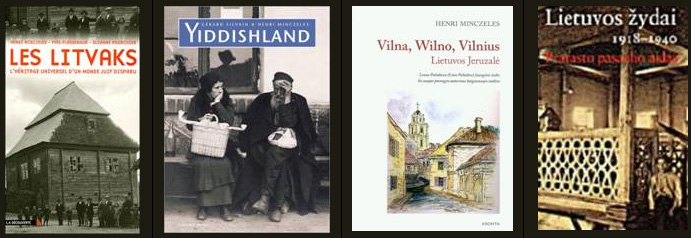 |
- Bookmark :
- Digg
- del.icio.us
- Stumbleupon
- Redit it
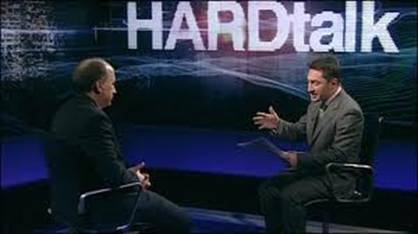
Lithuania has become one of the biggest victims of the global economic crisis. The economy has shrunk dramatically and the hangover from Soviet rule continues to cast a long shadow over domestic politics and foreign affairs. Still, in a recent Hard Talk session with the BBC, Prime Minister Andrius Kubilius insisted that the country's economy is stabilising.
Most analyst believe that, in 2011, Lithuania’s GDP growth will be about 3 percent; exports will rise approximately 11 percent, while the average salary will go up 3 percent. The high unemployment rate will, however, remain one of the biggest problems. It will probably go down a bit, but it will remain high overall – about 16 percent. An unemployment decrease should be related to laying a general foundation for economic growth. It is very important not to adopt what at first sight seems attractive, but, at the end of the day could be situation-worsening decisions; this could be, for example, not to increase the minimum wage. The shadow economy will also remain a burning head ache for the government, and a very bright scenario for 2011 is therefore not likely.
Text: Torben Pedersen
Moderate optimism for 2011….,still a number of challenges to be addressed.
For the year 2011, she foresees record highs in Lithuanian exports, approximately 12 percent growth which, however, is a slower gain compared to last year. “Trends in exports will remain positive, as all our major export markets - Poland, Latvia, Russia and the Commonwealth of Independent States (CIS) - will grow faster this year than in 2010. Besides, the upcoming European Basketball Championship will prompt a positive impulse to service exports as well,” the Swedbank chief analyst maintained.
However, according to her, the labor market will recover slowly, both in creating new jobs and in salary growth. “In the new year, we predict job creation for 40,000 people, mostly in the private sector, which will decrease the current unemployment rate by 2 percent, to 15.5 percent. However, a slow salary increase, considering the speed of inflation and, consequently, price rises, will not be tangible,” Vrubliauskiene emphasized to The Baltic Times. She sets the inflation rate at 2 percent in 2011. As for household income this year, she sees it similar to the previous year’s level. “However, consumption recovery will be further induced by a slower savings rate due to the reduced savings interest rates. Lithuanian households have saved nearly 2 billion litas (579.7 million euros) over the two year crisis. Since unemployment risk is lessening and consumer trust is growing, household consumption will grow approximately 1 percent, particularly for non-primary necessity articles,” Vrubliauskiene pointed out.
In the short- and medium-term, she foresees the biggest domestic risk being related to the condition of the state’s finances and slowly proceeding structural reforms. “Though this year the budget deficit can be decreased up to 6 percent of GDP, it will surpass the 3 percent GDP level set by the Maastricht criteria and will be higher than the needed balanced budget level,” Vrubliauskiene said.
“Let’s do what we have done best for centuries – agricultural products”
Bronius Markauskas, chairman of Lithuania’s Chamber of Agriculture, is convinced that Lithuania ought to pursue what it has done best for centuries – grow agricultural products, produce food products and export them. “In 20 years, EU and world experts predict that food products, due to several important reasons, such as climate change, world population increase, economic growth and higher food product demand in Asia and Africa, will become strategic commodities. Will Lithuania take advantage of the developments and increase its agriculture product output? The positive response lies upon several conditions – whether Lithuania will have sufficiently high and stable procurement prices of agriculture production, proper general EU agriculture policies after the financial period is over in 2013, and the bureaucratic load decreasing for farmers,” Markauskas said.
He admits that agriculture production prices are very hard to predict. “In recent years, food provisions were getting more expensive in world markets. I reckon this year will be more stable in many senses. However, in the long term, food provision demand and, therefore, their prices should be increasing. As far as post-2013 European agriculture is concerned, we still have many unanswered questions. The European Commission has not made up its mind as to agricultural financing after 2013. Likely, we will find out about its decisions in the midst of next year. They will have a long-lasting effect not only for Lithuanian farmers, but for all EU farmers as well,” Markauskas asserted.
Despite brighter general assessments for Lithuania’s economy, “its very bright scenario for 2011 is unlikely.”
Vytautas Zukauskas, expert at the Lithuanian Free Market Institute (LFMI), says that, despite brighter general assessments for Lithuania’s economy, “its very bright scenario for 2011 is unlikely.” According to LFMI, in 2011, GDP growth will be about 3 percent; exports will rise approximately 11 percent, while the average salary will go up 3 percent. LFMI’s expert asserts the high unemployment rate will be one of the biggest problems for Lithuania this year. “It will go down a bit, but it will remain high overall – about 16 percent. An unemployment decrease should be related to laying a general foundation for economic growth. It is very important not to adopt what at first sight seems attractive, but, at the end of the day could be situation-worsening decisions; this could be, for example, not to increase the minimum wage,” Zukauskas said.
He emphasizes that the shadow economy will remain a burning problem in 2011. “Its share in the gross domestic product will reach approximately 27 percent this year. At least 36 percent of all households will do a part of their work activity in the shadows. Thus, the shadow economy scenery will not be much different from what we saw in 2010. We have to admit that the shadow economy, for a good many people, remains as an alternative to poverty and unemployment. Due to its vast spread during the crisis years, Lithuania has avoided major social unrest. It is the state’s concern to pull its inhabitants out from the shadows,” Zukauskas contended.
He claims that export growth will be one of the very few buoyant indicators in the Lithuanian economy in 2011. However, he cautions, it will affect positively only some enterprises. “It makes sense to take advantage of export possibilities; however, it cannot be a foundation for Lithuania’s economic recovery and growth,” the expert warned.
Zukauskas maintains that the state sector’s deficit and debt will be a burdensome issue in 2011. “The downturn has exposed a lack of flexibility in the public sector. It is estimated that in 2011, the state’s debt will make up 40 percent of GDP, while in 2008 it comprised only 16 percent. In comparison with other EU states, Lithuania’s debt is not very high. However, we should have in mind that, even during the double-digit GDP growth years during the economic boom, Lithuania was not capable of decreasing its debt. Since 1998 it has been constantly growing in Lithuania. Thus, it purports that Lithuanian officials are not good at managing it. Likely, with the recovery spreading, politicians may not be willing to handle it in 2011 either,” Zukauskas asserted.
Asked about euro introduction prospects, he answered, “The euro future will depend on how quick most economic hardship-stricken countries will be able to recover and see their economies growing.”
“2011 will be a bit better than 2010”
Gitanas Nauseda, advisor to SEB Bank’s president, and a notable financial analyst in the country, predicts that 2011 will be a bit better than the last year. However, he cautions, not to be excessive with expectations. “For 2010, we expected faster GDP growth, to be exact, about 4 percent, and domestic market recovery; however, expectations have failed. Domestic consumption was impeded not only by fundamental reasons, such as a high unemployment rate and salary decrease, but also by the pessimistic expectations that reflected the population’s tensions and uncertainty about the future. However, in 2011, the situation should improve, but slowly,” Nauseda said.
Asked about loan market prospects, he replied, “Crediting directly depends on client solvency.” The analyst contends that if the circle of clients, being able and willing to use financial services, does not expand considerably this year, it will be difficult for banks to enliven the market. “In the last months of 2010, there were observed tentative loan portfolio growth trends, which have become a good introduction to 2011. I think that credit resources should not get very expensive this year, as the European Central Bank will try not to stifle the frail economic recovery and will go ahead with a ‘cheap money’ policy. However, in the second half of 2011, EURIBOR interest rates will likely go up, counting in a possible base interest rate increase in 2012,” Nauseda predicted.
As for euro introduction in Lithuania, the analyst anticipates “it can be introduced in 2014 at best.” He warns that “In order to achieve this, it is necessary to decrease the fiscal deficit to 3 percent of GDP in 2012 and keep up a modest inflation, not allowing it to exceed that which is set by the Maastricht criteria. Considering that elections to the Seimas will take place in 2012, it will not be simple to follow strict fiscal discipline, as pressure for the ruling coalition to implement its given social promises, such as pension restoration to the pre-crisis level, will only increase.” Nauseda expects that exports in 2011 will keep growing, particularly to eastern markets and neighboring countries Latvia and Poland. However, he warns, it is important not to give up the positions that have been seized in Western markets in 2010.
“SEB Bank’s analysts see 2011 in a considerably brighter light than 2010”
Julita Varanauskiene, a SEB Bank analyst, says that households’ financial life started to return to normal in 2010. “Starting with the second half of 2010, there appeared more positive news for households – very slowly, but assuredly salaries began to grow, new jobs numbers started to increase, fractionally. Public polls also speak about lower pessimism,” Varanauskiene said. She says that SEB Bank’s analysts see this year in a considerably brighter light than last year. “According to the analysts, in 2011, unemployment will fall from 17.5 percent to 16 percent, while the average salary should increase by 3.5 percent. Therefore, household income will rise slowly and, likely, it will be easier to find a job this year. Increasing prices will diminish the positive effect of a larger income, though. Our analysts envisage price increases in the commodity and service basket by 2 percent in 2011. Due to a higher excise tax for fuel, energy resources may get more expensive in 2011. It also can be a result of increasing oil and gas prices in international markets. Therefore, prices of some commodities, including food products, may go up,” Varanauskiene guesses.
Viewing the data of 2010, she emphasizes that in some market sectors, for example, in the pharmaceutical industry, salaries have already increased by 14 percent, while in the computer, electronic and optics industries average pay has gone up by 12 percent. “Certainly, the crisis has been over in some market sectors. The trend will likely prevail in the new year,” Varanauskiene expected.
“Economic trends in Western and Eastern markets being served by Lithuanian haulers are favorable”
Algimantas Kondrusevicius, president of Lithuania’s National Road Carriers’ Association, asserts that economic trends in Western and Eastern markets being served by Lithuanian haulers are favorable. “However, our carriers frequently encounter with neighboring countries administrative hurdles. With the newly adopted order, load declaration procedures should be shortened to 5-10 minutes, facilitating our carriers’ work. However, in the domestic haulage market, I do not see much optimism. Due to the increased excise tax for diesel, load haulage and passenger transport will become more expensive for all. Therefore, other merchandise and services will jump in price as well in 2011,” Kondrusevicius predicts.
Public opinion polls show returning optimism to Lithuanian households, which can probably be considered as the most anticipated sign for a better year and life.
- Bookmark :
- Digg
- del.icio.us
- Stumbleupon
- Redit it
Again time to invest in Lithuania?
- Posted by - (0) Comment
- Bookmark :
- Digg
- del.icio.us
- Stumbleupon
- Redit it
Lithuania’s budget deficit will remain “high” for several years, because of swelling government debt, and weigh on the country’s credit ratings, Moody’s Investor Service concluded in 2010. Lithuania’s economic recession, the deepest since the fall of communism 20 years ago, is undercutting the government’s efforts to narrow the budget gap, which swelled to about 9.5 percent of gross domestic product last year. The government of Prime Minister Andrius Kubilius cut spending and raised taxes to save about 9 percent of GDP last year. “The government’s budget deficit is still very high, and will remain high for several more years, causing a significant increase in government debt,” Orchard said. “We continue to assess the evolution of both the economy and government finances to determine whether the rating should remain at Baa1 or be downgraded to Baa2.” Moody’s rates Lithuania’s sovereign debt Baa1, the third- lowest investment grade.
The Moody rating, which was cut twice in 2009, has a negative outlook.
- Bookmark :
- Digg
- del.icio.us
- Stumbleupon
- Redit it
Inadequate financial markets
- Posted by - (24) Comment
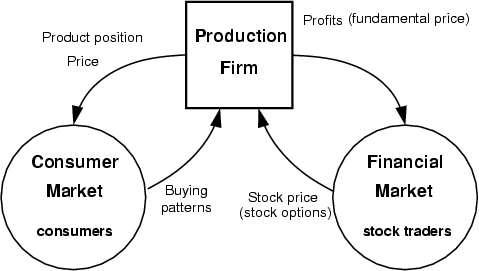
The Integrated Markets Model.
Consumers purchase products, and financial traders trade shares. Production firms link the consumer and financial markets, by selling products to consumers and offering their shares in the financial market.
Despite some progress in developing the domestic financial markets over the last two decades, the overall liquidity of the markets remain inadequate for any large scale development in Lithuania. At the same time, the corporate debt market remains negligible. Overall, among the potential factors hindering development of the securities markets in Lithuania are the small size of the domestic market, lack of institutional investors (pension funds, mutual funds etc.), prohibition of issuing debt securities denominated in foreign currencies domestically and a poor investment culture. For the above reasons the Lithuanian financial markets provide only limited resources for the private sector. For example, the value of private...
- Bookmark :
- Digg
- del.icio.us
- Stumbleupon
- Redit it
Legendary Litvak heroes of Africa
- Posted by - (5) Comment
Three African Governments are these days coordinating a combined honouring of twelve Litvaks who through two centuries made outstandingly much to help their African homelands and their peoples. They release these honours publicly as a completely new stamp issue now in March 2011. The stamp issue acknowledges the extraordinary sacrifices made by Jews to the liberation of their African brethren, and these stamps recognize some of the most significant contributors to global humanity in the 20th Century.
In the anti Apartheid South African Liberation struggle, it was estimated that Jews were over represented by 2,500 percent in their proportion to the governing population. This stamp issue acknowledges the extraordinary sacrifices made by Jews to the liberation of their African brethren, and these stamps recognize some of the most significant contributors to global humanity in the 20th Century.
LIBERIA
 Helen Suzman
Helen Suzman
Helen Suzman (nee Gavronsky) was born in the South African mining town of Germiston on 7 November 1917 to Samuel and Frieda Gavronsky, both immigrants from Lithuania who had come to South Africa to escape the restrictions imposed on Jews.
Read more
 Eli Weinberg
Eli Weinberg
Eli Weinberg was born in 1908 in the port of Libau, in Latvia on the Baltic Sea. He experienced the First World War and the October Revolution of 1917 as a child, and this led to his socialist political development. During World War I, he was separated from his family.
Read more
 Esther Barsel
Esther Barsel
Esther Barsel (born October 17, 1924, in Raguva, Lithuania; died October 6, 2008, in Johannesburg) was a South African politician and long-standing member of the South African Communist Party (SACP). She was a member of both her local African National Congress branch and the SACP's Johannesburg Central Branch..
Read more
 Hymie Barsel
Hymie Barsel
Hymie Barsel was born on September 11, 1920 in Fordsburg, Johannesburg, South Africa to Faiga and Moishe Barsel, both of Litvak heritage. He was raised in a Zionist oriented home. He suffered from epilepsy which was ill understood at that time, eventually receiving treatment from Dr. Max Joffe, also a Zionist.
Read more
SIERRA LEONE
 Yetta Barenblatt
Yetta Barenblatt
Yetta Barenblatt was born on 24 September 1913, in Dublin, Ireland, to Basna and Solomon Malamed of Lithuanian origin. In 1925, a friend encouraged her to come to South Africa with the promise of employment. However, due to her circumstances, further education was not possible and Barenblatt was forced to seek employment at a retail store.
Read more
 Ray Alexander Simons
Ray Alexander Simons
Ray Alexander Simons née Alexandrowich was born on 12 January 1913 in Latvia. While at school, she displayed little fear in challenging authorities. Her independent thinking suggested she pursue a career in medicine but she soon took up politics. When she was about 13, she became active in the underground Latvian Communist Party.
Read more
 Baruch Hirson
Baruch Hirson
Baruch Hirson, named after his late grandfather, was born on 10 December 1921 at Doomfontein near Johannesburg in the Transvaal. His father was an electrician. His parents, Joseph and Lily Hirson, were Jews who had immigrated to South Africa to evade the pogroms, persecution and discrimination Jews were subjected to in the old Romanov Empire.
Read more
 Norma Kitson
Norma Kitson
Norma Kitson was one of a generation of Jewish activists, who committed themselves to the struggle against racial tyranny in South Africa. The drive of these South African Jews was to give witness against racism and social injustice, even at great personal cost. Norma Kitson's autobiography, Where Sixpence Lives (1986), uniquely fuses the personal and the political.
Read more
GAMBIA
 Ruth First
Ruth First
Ruth First was born on May 4, 1925 to Jewish immigrants Julius and Matilda First. Julius, a furniture manufacturer, was born in Latvia and came to South Africa in 1906. He and his wife were founder members of the Communist Party of South Africa (CPSA) or South African Communist Party (SACP) in 1921 . Ruth and her brother, Ronald, grew up in a household in which intense political debate between people of all races and classes was always present.
Read more
 Hilda Bernstein
Hilda Bernstein
Hilda Bernstein was born in London in 1915. Her father was Simeon Schwartz from Odessa, Ukraine. He relocated to England in 1901 where he became a Bolshevik and represented the new USSR in UK for a short while in 1920's. He returned to the USSR when recalled in 1925, and died in the 1930's without ever having returned to the UK.
Read more
 Lionel "Rusty" Bernstein
Lionel "Rusty" Bernstein
Lionel “Rusty” Bernstein was born in Durban, in 1920; the youngest of four children of European émigrés. Orphaned at eight years old, he was raised by relatives. These early disruptions to his family life were compounded when he was sent to finish his education at a boys’ boarding school. Hilton College, a private school, that was the South African equivalent of Eton or Harrow.
Read more
 Ronald Segal
Ronald Segal
At an early age, Ronald Segal proclaimed himself a Socialist, saying he did not want to be a millionaire. But he had no choice. His father was a co-owner of Ackerman's, a giant cheap clothing chain in South Africa. At their home on the slopes of Cape Town's Lion's Head, his Zionist parents entertained visiting dignitaries. At age eight, Ronald read “Gone With the Wind” and a biography of Disraeli.
Read more
© Legendary Heroes of Africa
Stamps may be purchased at: www.CyberStamps.com.
www.LegedaryHeroesofAfrica.com is not affiliated with www.CyberStamps.com. The above link is provided as a servise to our visitors.
Jews in South Africa
Some background/facts:
1. Nelson Mandela in his “Long Walk to Freedom” wrote, “I have found Jews to be more broadminded than most whites on issues of race and politics, perhaps because they themselves have historically been victims of prejudice”. It was a firm of Jewish lawyers Witkin, Sidelsky and Eidelman that challenged Apartheid by engaging Mandela as an articled clerk, thus giving him the rare chance for a Black man to become a lawyer. While studying law he became friends with fellow students and future anti-Apartheid political activists Joe Slovo, Harry Schwarz and Ruth First.
2. Jews comprised only about 2% of the White (ruling) population and 0.6% of the total population, South African Jews should take tremendous pride in the very high proportion that opposed Apartheid in multiple fashions. Of the 150 charged in the 1956 Treason Trial of Anti-Apartheid activists, 23 were whites and of the 23 whites, at least 14 were clearly identifiable Jews (well over 50%). Advocate Isie Maisels won acclaim for his leadership of the defense team which achieved acquittal of all the accused in the Treason Trial. As a committed Jew, Maisels had served as President of the Federation of Synagogues, as well as on the Executives of the Jewish Board of Deputies and the South African Zionist Federation. The 1963 Rivonia Trial resulted from the ANC having secretly established underground headquarters where the military arm of the ANC Umkhonto we Sizwe (The Spear of the Nation) was conceived. The premises at Lilliesleaf Farm were acquired by Arthur Goldreich who had served as a volunteer in the nascent Israel army in 1948. Nelson Mandela stayed at the farm in the guise of a farm worker. Significantly, all the whites arrested in this epoch-making event were Jewish: Arthur Goldreich, Rusty Bernstein, Dennis Goldberg, Bob Hepple, and Dr Hilliard Festenstein. Goldreich now lives in Israel
3. It is doubtful that any other group can boast anything approaching the proportionate number of Jews who took part in the struggle against Apartheid. The South African Muslim community comprised 1.1% of the total population compared with Jews 0.6%. The number of Muslims known to have actively opposed Apartheid is minimal and in fact they were reported to have cooperated with the Apartheid government. While Afrikaans newspapers frequently accused the Jews of subverting the Apartheid Regime, pointing to the high percentage of Jews among the whites detained by the police, the Afrikaans newspaper Die Burger in a two-part series, praised the Muslim community for its cooperation. It said: “Moderate Muslim theologians (geestelikes) in the Peninsula are of the opinion that not even civil disobedience is permissible for the Muslim minority in South Africa where they are to obey the law and are under obligation to negotiate if they consider the political system to be unjust or oppressive.”
4. The secretary general of the African National Congress Kgalema Motlanthe in his address to the 42nd Biennial Conference of the South African Jewish Board of Deputies in Gauteng on October 19, 2002 said “That people of Jewish descent should be so prominent in the liberation movement says something fundamental about the compassion of Judaism”. Many Jewish immigrants who arrived in our shores in abject poverty, laying claim to little but their rich commitment to humanitarian and egalitarian ideals. These commitments were sometimes rooted in traditional Jewish teaching. They sometimes emerged from traditions of socialism. Whatever the case, Jewish compassion is the fruit of empathy, rather than sympathy. It is the fruit of struggle over many millennia, against racism and persecution”.
5. Jewish influence towards racial equality in South Africa dates back to the earliest days of Jewish immigration. As far back as 1917 a Yiddish-speaking branch of the International Socialist League was formed. This league, a forerunner of the South African Communist Party (SACP) organized unions and co-operatives without distinction of class or color, eventually being absorbed into existing unions. Another typical example of the early days was the Garment Workers Union (GWU) a militant and multiracial trade union led by its general secretary, Solly Sachs from 1935 to 1948. White unions and the government fiercely opposed the GWU.
Mr. Motalanthe (mentioned in 4 above) said of Joe Slovo
“he was proud to acknowledge the Jewish roots of his compassion. Brought up as a child in a Lithuanian ghetto, he experienced at first hand the degradation and misery of being unfairly treated for no proper reason. So in the South Africa he grew to love, he determined that no one should be singled out for unfair treatment for no proper reason.
The disproportionate representation Jews amongst the minority of whites that chose to cast their lot in with the oppressed did not go unnoticed by the racist regime and there were consequences for the Jewish population by the racist regime.
- Bookmark :
- Digg
- del.icio.us
- Stumbleupon
- Redit it
Lithuanian sport A – W
- Posted by - (35) Comment
Ramūnas Vyšniauskas, the weightlifter whose medal collection contains European silver and bronze medals.
There are over a hundred different kinds of sports in Lithuania, with the top three most popular sports being basketball, football, track-and-field. Check this web page to read more: http://lietuva.lt/en/sport
- Bookmark :
- Digg
- del.icio.us
- Stumbleupon
- Redit it
Recovery for Baltic tourism sector
- Posted by - (0) Comment

Carnival in Vilnius.
Photo: Lithuanian State Department of Tourism
- It was something of a recovery period for the Baltic tourism industry in 2010, following a challenging 2009. In all three Baltic countries tourist arrival numbers fell in 2009. Latvia welcomed the most tourists (4.72mn), with Lithuania and Estonia both attracting just over 4mn. Latvia's position as the cheapest tourist destination of the three Baltic countries helped it maintain tourist numbers slightly better than its neighbours during the period of global economic uncertainty in 2009. The decision by the Latvian parliament in May 2010 to reduce the VAT rate on hotel accommodation from 21% to 10% further underlines the country's attractiveness compared to its Baltic peers.
Looking at trends in 2010, all three countries reported higher hotel occupancy rates over the summer months, which bodes well for full-year tourist arrivals figures. We estimate growth in tourist arrivals of 3% for Estonia, 5% for Latvia and 2.5% for Lithuania in 2010. Looking ahead, we are positive about the outlook for all three countries, with a slight preference for Latvia's potential growth in the next five years. Estonia remains the largest tourism market in terms of tourist revenues, generating US$1.42bn in 2009. Lithuania was second with US$870mn, with Latvia in third on US$674mn.
We are upbeat about the outlook for the Baltic region. Cruise travel in the region is continuing to grow in popularity, with Tallinn's status as a European Capital of Culture in 2011 also likely to draw in tourists from across the continent. Riga will be a Capital of Culture city in 2014. Arrivals from Russia should also continue to grow strongly throughout our newly extended forecast period to 2015 as a result of rising disposable income and increased flight services between Russian cities and the Baltic region, most notably by airBaltic.
In BMI's updated Tourism Environment Business Ratings for 2011, the Baltic countries are towards the middle of the table: Estonia is in joint sixth place with Turkey, while Latvia and Lithuania are in joint eighth place. This partly reflects the still developing nature of the region's tourism industry compared to its peers across Central and Eastern European.
Note On Accommodation Data
BMI advises readers that the official number of accommodation establishments across the Baltic region has fluctuated wildly in recent years as a result of new builds and existing establishments choosing to register with government bodies and therefore becoming part of official data. This latter trend looks set to continue over the forecast period, which must be borne in mind when considering our projections through to 2015.
Estonian Air Back Under State Control
In May 2010, Scandinavian airline SAS Group announced that it wished to divest its 49% stake in Estonian Air as it concentrates on its home market. In September, a transaction was approved by the Estonian government, which provided EEK280mn via a rights issue to increase the airline's share capital. Following the rights issue, SAS saw its stake reduced to 10%, with the government now holding 90% of Estonian Air. According to SAS, the airline has an option to buy this 10% stake (and SAS has the option to sell the stake) at a 'fair market value' after four years. SAS has said it will continue commercial cooperation with the Estonian flag carrier.
Over January-August 2010, Estonian Air carried 383,271 passengers, down by 1.6% year-on-year (y-o-y). However, following a poor start to the year, there was a steady increase in passenger numbers in the last four months of this period, according to the airline.
Star Holidays Enters Bankruptcy
In October 2010, Lithuanian travel company Star Holidays (and its subsidiary Star1 Airlines) started bankruptcy proceedings. The company, which was only established in June 2009, had incurred debts reportedly in excess of LTL5mn by the time of its closure. The trigger for the bankruptcy was the decision by Dublin Airport in late September to detain Star1 Airways' only Boeing 737 aircraft following non-payment of aircraft leasing fees.
The collapse of the travel company was another blow to the Lithuanian aviation industry, which suffered the indignity of the former national flag carrier flyLAL going to the wall in early 2009. Star Holidays' failure also underlines the risks still prevalent across the global tourism industry as the world economy moves towards recovery.
For more information or to purchase this report, go to:
- www.fastmr.com/prod/94387_baltics_tourism_report ..
View more research from Business Monitor International at www.fastmr.com/catalog/publishers.aspx?pubid=101 ..
About Fast Market Research
Fast Market Research is an online aggregator and distributor of market research and business information. We represent the world's top research publishers and analysts and provide quick and easy access to the best competitive intelligence available.
For more information about these or related research reports, please visit our website at www.fastmr.com or call us at 1.800.844.8156.
|
Author: |
- Bookmark :
- Digg
- del.icio.us
- Stumbleupon
- Redit it
The California Baptist who collected 5000 Jewish books and brought them all to Lithuania
- Posted by - (8) Comment

Wyman Brent Wyman Brent is not like California Baptists in general. Several years ago he fell in love with Vilnius, now living here permanently. “I plan to live here for the rest of my life,” he says. His great passion in life is Jewish books – books written by or about Jews. Therefore, he has over the latest years bought more than 5,000 such books and taken them to Vilnius to open a Jewish library. Read his own story about motives and ideals for a meaningful life.
Text: Wyman Brent
Using a wire brush to scrub a broken sink can help strengthen Jewish culture. Most people are not aware of this. Thus I found myself kneeling in a parking lot on a hot summer day with a hose and attempting to remove concrete dust from an old metal sink. To aid in the cleaning, the hose was turned on to wash away the dirt and dust. After a while, there was quite a stream of water running over the asphalt, down the street where it took a right at the intersection until it reached a storm drain. I only noticed this at the end when hot and tired, I was going to a café to get a cold drink.
What I did pay attention to while repeatedly running the brush and hose back and forth, up and down, left and right was the puddle created. The tiny pool of water gave off a big reflection of trains, trains going one direction or another, one city or another. Trains carrying passengers and trains carrying freight. That was now, but what about then. I had sat out many times over the past months on a balcony overlooking the parking lot from which one could sit and drink coffee or tea (your choice) and watch the trains roll by. It is an idyllic place to relax and read a good Jewish book…or maybe better to say a book by a Jew. I have a wide variety of reading material.
It never really occurred to me to think of how that rail line might have been used during the war. How many freight cars carrying ammunition, weapons, and other supplies did the Nazis send along that same line all those years ago? How many cattle cars were filled to beyond human capacity with people whose only “crime” was to be Jewish? It did occur to me this day as I looked at the puddle which I created as a result of working to improve Jewish life in Vilna. The thought brought tears to my eyes, and I was glad to be alone at that moment.
So how exactly does an old sink going from dirt and dust encrusted to somewhat less filthy improve things Jewish? The next day was to be the second event to promote the Vilnius Jewish Library. The first event had been a big success with members of the Jewish community, members of Parliament, and various Ambassadors in attendance. There was a presentation of books and other materials which would be in the future library when its doors were open to the public. The second event would present similar material to the previous. So how to make it different? I wrote to a friend in California asking that very question. She suggested a dining table covered with books, shelves lined with food and books, and a sink filled with…yes books.
|
|
So how to make it different? I wrote to a friend in California asking that very question. She suggested a dining table covered with books, shelves lined with food and books, and a sink filled with…yes books. The idea was to show that Jewish life, thought, and culture was as much a part of Lithuania as the food which we consume. One can no more avoid the influence of all things Jewish here than one can avoid finding beetroot soup in any restaurant which serves traditional Lithuanian food. Both are so much part of the fabric of society. |
The idea was to show that Jewish life, thought, and culture was as much a part of Lithuania as the food which we consume. One can no more avoid the influence of all things Jewish here than one can avoid finding beetroot soup in any restaurant which serves traditional Lithuanian food. Both are so much part of the fabric of society. That brings me back to the not so raging river of water running down the street. Cars were driving through the water and pedestrians were stepping over it. Nobody gave much thought if any to where the water came from or the reason for it to be there.
A wire brush and a green garden hose gave new life to an old sink. That old sink, still very much rusted and with broken bits and pieces, did its part to help get people in Vilna to once again give serious thought to the impact which all things Jewish have had on this country. The concrete dust which coated the sink had become hardened over time. The constant moisture in the air here made sure of that. Can’t the same be said of many people’s attitudes? They forget something because it is out of sight and out of mind. The thing sits neglected in a dark corner.
That old sink received a second life. Jewish life in Lithuania is doing the same. The recent opening of the Litvak Studies Institute, and the soon to open Vilnius Jewish Library is proof of that. The Lithuanian government is providing space, funding, furniture, and staffing. What they are not providing is more material for the library. That depends on those around the world who truly care about Jewish culture. Jewish life does not begin and end only within the borders of the USA and Israel. Things will never be as they were in the Jerusalem of Lithuania. However, things can and will be better than they are now.
For the past six years, I have dedicated my life to promoting tolerance and understanding. I have gotten down on my knees underneath a hot sun to scrub a broken sink. I have lifted box after heavy box of books until my back was aching. I moved from sunny Southern California to a land where I have seen it snow as early as October and as late as April. I have spent countless hours and tens of thousands of dollars to collect and ship books, CDs, and DVDs. During my journey from California to Lithuania, I stopped along the way and bought more material for the library. There were stops in London, Budapest, and Krakow. Each time my luggage became heavier and heavier. All of this I have gladly done and will gladly do the rest of my life. What are you willing to do to help strengthen Jewish culture and to fight anti-Semitism? Nobody is asking you to get down on your hands and knees. Nobody is asking for you to spend your last dollar as I have done. What I am asking is, what will you do today for Jewish culture?
|
|
For the past six years, I have dedicated my life to promoting tolerance and understanding. I have gotten down on my knees underneath a hot sun to scrub a broken sink. I have lifted box after heavy box of books until my back was aching. I moved from sunny Southern California to a land where I have seen it snow as early as October and as late as April. I have spent countless hours and tens of thousands of dollars to collect and ship books, CDs, and DVDs. All of this I have gladly done and will gladly do the rest of my life. What are you willing to do to help strengthen Jewish culture and to fight anti-Semitism? Nobody is asking you to get down on your hands and knees. Nobody is asking for you to spend your last dollar as I have done. What I am asking is what will you do today for Jewish culture? |
Wyman’s motto:
Be ashamed to die until you have won some victory for humanity.
– Horace Mann
- Bookmark :
- Digg
- del.icio.us
- Stumbleupon
- Redit it
- Posted by - (1) Comment
The American-Lithuanian who breeds African snails in his Vilnius bathroom
Text: Aage Myhre
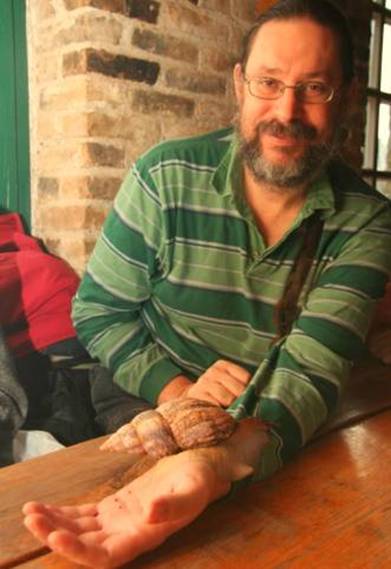
‘This snail is around one year old. It loves to explore
my shirt,’ explains Arturas.
Arturas Bakanauskas, 49, was born in California to an American father and a mother of Lithuanian ancestry. When Arturas was three years old, his father died. That was the beginning of a long journey with his mother from state to state in the U.S. – from California to Chicago, Maryland and Arkansas before finally ending up in Texas, where Arturas grew up on a homestead with his mother and stepfather.
It was during the years in Texas that Arturas began to take interest in languages. He discovered that he had a fairly unique way of organising grammar and associating vocabulary that made it possible for him to learn faster than many others who usually focus much more on grammar instead of on vocabulary.
But he was awarded a teaching degree from the Texas university where he met the woman who became his first wife. After graduation they moved to Virginia, where Arturas taught for a year.
‘When did you first take an interest in Europe?’
Arturas and I sat at a cafe table in Vilnius on Saturday afternoon last week, and I wanted to find out more about why someone who was born, raised and has lived most of his life in the United States, decided to move to Europe as an adult.
‘I wanted to move to Holland in the 4th grade when I first heard of Europe. The next year I learned about my Lithuanian roots and I concluded it was there that I wanted to live, not in the US. But under Soviet rule, that was not a possibility, even to visit. While married, any plans of Lithuania were decidedly on the back burner since my wife was not Lithuanian or had any interest in Europe or foreign languages.
Only after Lithuania’s independence in 1990-91 and my divorce in 1993 was it possible to think about Lithuania once again. I corresponded with Lithuanians for a year or so before my first visit in 1995. Only when one of them sent a copy of Lithuania in the World did I realise that the images of famine, no housing, and gangsters shooting it out on every street corner that were the only word we got of Lithuania in my part of the States were not reflective of reality and I resolved to see for myself.’ This is what he tells me when I ask him why he wanted to return to his ancestral homeland.
It felt like I had finally come home, but I also felt like I had gone 50 years back in time’ he adds over the cafe table this late autumn day in Vilnius.’
It is now fourteen years since Arturas permanently moved to Lithuania because it took him less than a year to settle all his affairs in the States and move abroad. And here we sit on a late autumn day at a cafe table in the Lithuanian capital, talking about African snails and other aspects of the life of this man who so clearly prefers a life off the beaten track.
The first months after Arturas moved to Lithuania, he lived in the western Lithuanian town of Telšiai where he worked as a teacher. But after a time he concluded that it probably would be better to live in a bigger city and so Vilnius became his new home. While living here, he met the woman who became his wife and together they have an 11-year old daughter. Arturas was so dedicated about living in Lithuania that he even renounced his US citizenship so he could become a Lithuanian citizen.
Arturas’ main occupation nowadays is translating texts such as article summaries, articles, dissertations, and reports from Lithuanian into English. If you want to see a sample of his work, look for the movie Tomas Donela’s Farewell on DVD in March.
‘Is your work characterised by anything special,’ I want to find out.
‘What distinguishes my work is that I research unlisted terms, for example, stove tile names, which takes a lot of time to do. An everyday translator usually just makes a literal translation of the terms so that the basic idea is understood, expecting an expert in the field to edit the text and correct the technical jargon. For example, I just had the term “wick regulation device” in Lithuanian. While most translators would have stopped there, I did the research and found that in English it is called a “wick knob”.
I eventually started concentrating on archaeology texts as there are very few people specialising in this area. I especially enjoy being able to make a contribution by increasing and correcting the dictionary in this field, rather than just following in others’ footsteps.’
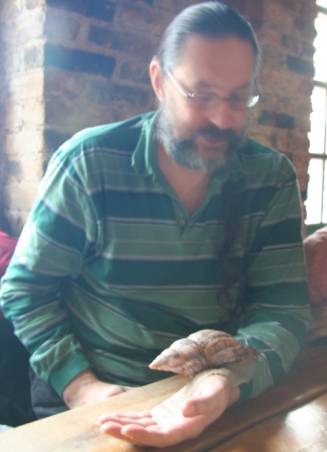
‘Snails are easier to care for than traditional pets,’
claims Arturas.
Still, it was neither archaeology nor book translations that became the main topic of conversation when we met at a cafe table this Saturday afternoon. Arturas had brought a box that he carefully placed in the middle of the table. The packaging around the box was slowly removed. And there they were; the big African snails that Arturas now breeds in his home’s bathroom here in Vilnius.
And here is how he explains his very special interest in these huge African creatures:
‘When I heard that snails can grow to 30 cm in length, I knew I had to have one if the opportunity ever presented itself. Finally it did last year and I have never regretted the decision. Not only are they easier to care for than traditional pets, they also interact strongly with their handlers.
For example, last summer we drove out to the coast one day with two of the snails in a box I was holding to keep it from vibrating. While waiting for a friend on the edge of Vilnius, I opened the snail box to see how they were taking the trip thus far. Both had woken up and seemed a bit worried about their new surroundings. So I offered one some food, which s/he refused. I looked away and when I looked back, I was just in time to see the snail very enthusiastically begin to engage the other in sex, which they continued to engage in until disturbed near the end of the trip.
On the way back, they got badly shook up on the back seat. When I noticed the situation, one snail was racing around the top of the box and the other had poked his head out of the soil, where he had tried to go to sleep, and it was just vibrating like crazy even on my legs. So I held them in my hands for about 15 minutes until they calmed down. The one snail went back to sleep, the other continued to casually look for a way out for an hour or so and then went to sleep.’
‘What did this experience tell you?’
‘This not only shows how much these primitive animals can feel and interact with people, it also shows how deeply rooted some of our instincts may be. The biggest pair of snails has become part of the family and everyone enjoys watching them eat, even for hours at a time.
Snails definitely have personalities and compete with one another. For example, you have to give two hungry snails two dishes of food. Otherwise one will cover the dish to keep the other from eating.’
So here he is, the American-Lithuanian translator and snail lover who has decided to stay in Lithuania, probably for good.
And, of course, at the end of our cafe chat this afternoon, I cannot resist asking him if he really enjoys living here.
‘Living in Lithuania has been a dream come true. Not only are the people friendly if you speak Lithuanian, the food good, and the climate great, I also have a job I love, a wonderful family, and even exotic pets.’
- Bookmark :
- Digg
- del.icio.us
- Stumbleupon
- Redit it
- Posted by - (1) Comment
It’s in Kaunas that you find the world’s only devil museum

There’s something unnerving about being alone with 2000 devils…
Velniu Muziejus contains three floors, and a stunning array of devils in all shapes, sizes, colours and materials and hailing from all corners of the globe, is spread over them. The museum has a long-standing tradition: any visitors from foreign lands can bring their own native devil art to add to the collection, making for some interesting viewing.
Before deciding to visit the museum you should know that this museum has no relations to Satanism, even priests dear to visit it.
Lithuania’s strong pagan heritage included the perception that also the devil is a part of the world and, in some cases – a personification of natural forces. Lithuanians and some other neighbouring nations believed that the devil has a strange sense of humour and that one had to be shrewd if to overcome him. However, not all managed to do this and some pieces of the collection are good illustrations of what then could happen. The museum contains numerous artistic works created for the sake of art, but also household items which had practical use.

The collection also contains pieces representing other cultures as all visitors may contribute by donating a devil from their country (Photo: www.7seasons.lt)
Each year more than 30 000 people visit this unique museum that was initiated by painter Antanas Žmuidzinavičius (1876-1966). The museum was established in his house after his death, but later moved to a special building.

Painter Antanas Žmuidzinavičius at home, January 1954
Photo: Family archive of Antanas Žmuidzinavičius
Main facts:
• Located in the centre of Kaunas, Putvinskio St. 64
• Exhibits collection of sculptures and carvings of approximately 3000 devilish creatures
• Before leaving your home country, please have in mind that visitors may donate their pieces to the collection of the museum
• Regular opening hours
September – May:
Tuesday – Sunday 11.00–17.00,
June – August: Tuesday – Sunday 10.00–17.00
• Excursions may be booked by telephone (+370-37) 221587.
- Bookmark :
- Digg
- del.icio.us
- Stumbleupon
- Redit it
VilNews e-magazine is published in Vilnius, Lithuania. Editor-in-Chief: Mr. Aage Myhre. Inquires to the editors: editor@VilNews.com.
Code of Ethics: See Section 2 – about VilNews. VilNews is not responsible for content on external links/web pages.
HOW TO ADVERTISE IN VILNEWS.
All content is copyrighted © 2011. UAB ‘VilNews’.
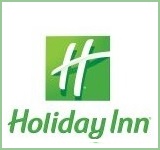
 Click on the buttons to open and read each of VilNews' 18 sub-sections
Click on the buttons to open and read each of VilNews' 18 sub-sections 

























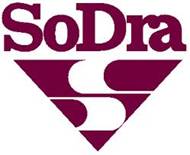

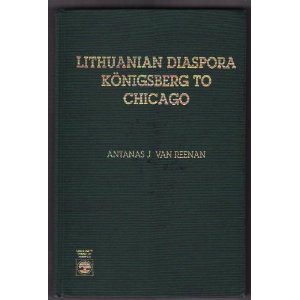

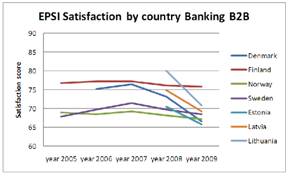

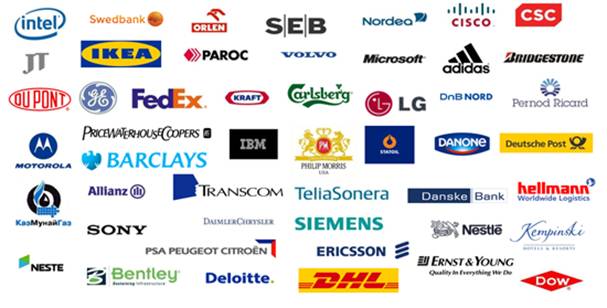
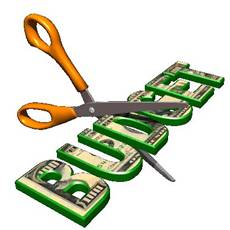
















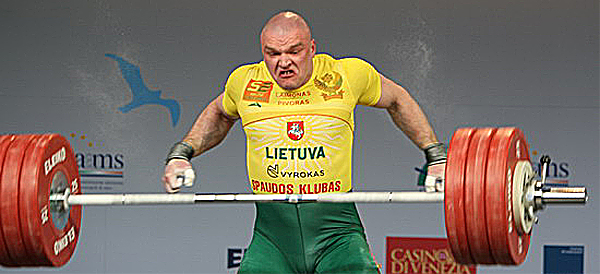


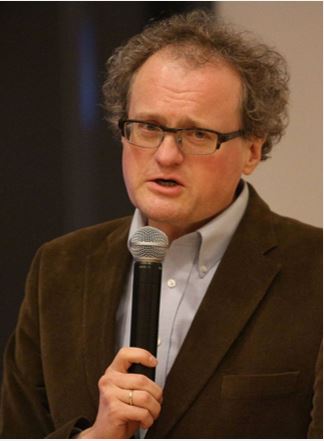
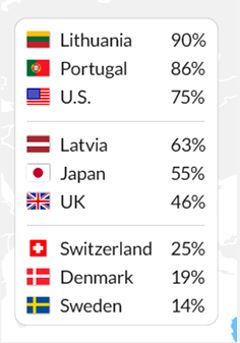
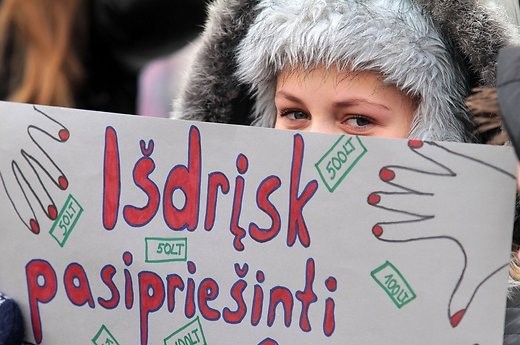
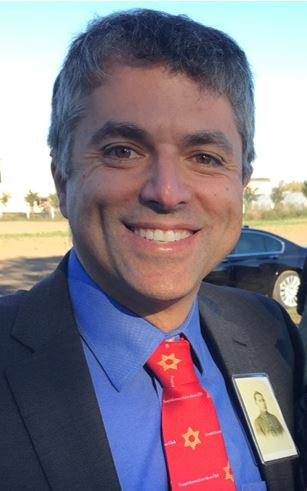

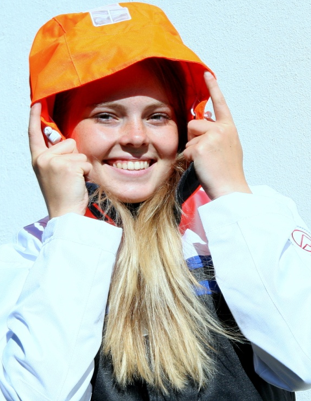
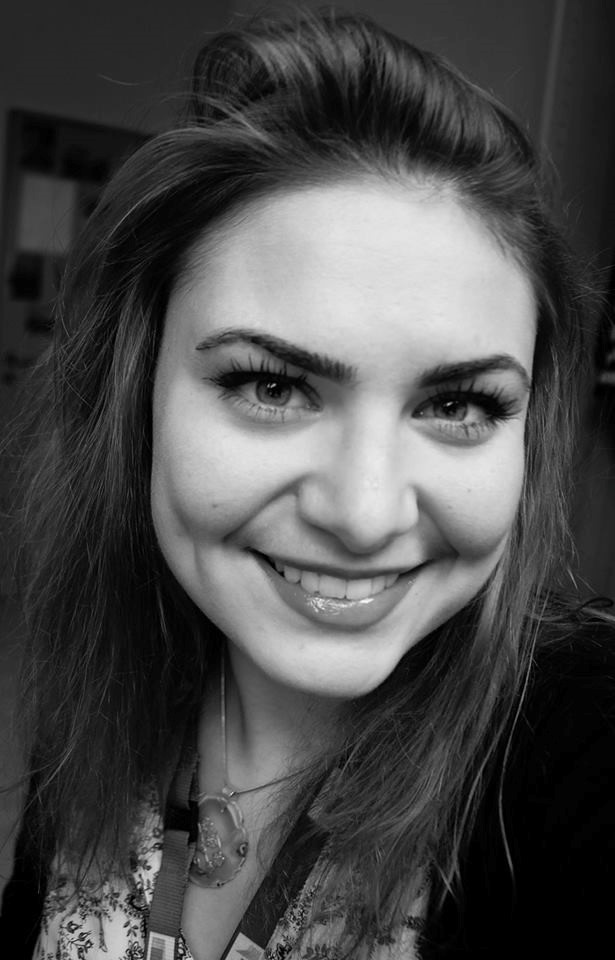
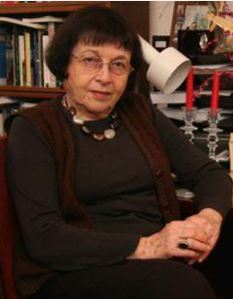
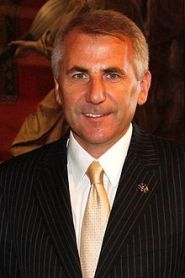
.jpg)
